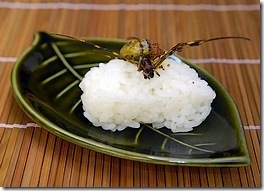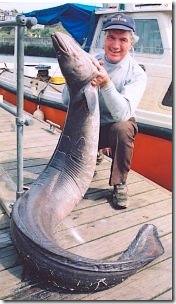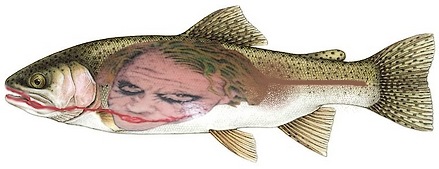 I’m a sucker for the dim view, given that economics and temperature mixed with apathy and the potential decline in size of the US government adds up to be the worst scenario, not the neutral agent others envision.
I’m a sucker for the dim view, given that economics and temperature mixed with apathy and the potential decline in size of the US government adds up to be the worst scenario, not the neutral agent others envision.
The short version is that a panel of 11 scientists from Colorado State University, Trout Unlimited, the U.S. Forest Service Rocky Mountain Research Station, the U.S. Geological Survey and the University of Washington Climate Impacts Group, have released a study of four trout species that suggests we’ll be losing half of all trout habitat over the next seventy years.
Most of that loss will be attributed to rising temperatures and global warming, and depending on which warming model is chosen – will dictate how much and how fast – and determines whether we care whether girls use saddle hackles or mule dung in their hair …
Congress is adamant the size of government must be reduced, given we owe most of the GDP to those countries still able to buy our debt, and depending on how much we decide to divest, will be eager to prune wasteful dollars funding watchdog agencies and trout planting – areas that hinder industry from creating millions of jobs, or serve only the privileged few … us fishermen.
Trout Unlimited and every privately funded conservation group added together couldn’t save a single river, especially so due to the waves of genetically-superior invasives outcompeting historical residents. Carp might be able to survive a couple of decades longer, but standoffish salmonids have no chance whatsoever.
Mostly because you guys balked when AquaBounty insisted they could insert the gene for sharp teeth and claws – which would’ve allowed them to go toe to toe with all those foreign regiments climbing out of the bilge water.
Instead you left their fate to boards of directors filled with well meaning retirees gashing themselves over “how come they let them trout’s die,” whose wailing lent wings to global warming.
 This being the age of Tea Parties, Beauty Queens from Alaska, and indistinguishable political parties, who’ve got no reason to keep industry in check, or slow their exploitation. Well meaning types weakened by foreclosure and the enforced idleness that comes with 24 months of unemployment, are likely to let down their at the lure of lasting and permanent jobs. Most of those will be cleaning the Pristine because BP fracked it, or something equally poisonous.
This being the age of Tea Parties, Beauty Queens from Alaska, and indistinguishable political parties, who’ve got no reason to keep industry in check, or slow their exploitation. Well meaning types weakened by foreclosure and the enforced idleness that comes with 24 months of unemployment, are likely to let down their at the lure of lasting and permanent jobs. Most of those will be cleaning the Pristine because BP fracked it, or something equally poisonous.
That’s more than likely the causal agent of most of the habitat loss, only the body scientific is reluctant to confess and endanger additional grants.
Should the globe warm a couple of degrees as science is predicting, that’ll clear both coastline and interior so they can pave and erect great glass edifices proclaiming our victory over Nature; how we booted Bambi from crapping on all that real estate – and gave her a spacious suite at the Zoo as reward …
They’re hurting, these men of a certain age. Losing their livelihood isn’t the only “transition” they’re going through. Dr. Jed Diamond, author of Surviving Male Menopause and The Irritable Male Syndrome, calls it a “double whammy.” The first: “a change of life, hormonally based, affecting our psychology and emotions from 40 to 55.” The second: unemployment. “It’s devastating. The extreme reaction is suicide, but before you get there, there’s irritability and anger, fatigue, loss of energy, withdrawal, drinking, more fights with their wives.”
– from Dead Suit Walking, Newsweek Magazine
Newsweek calls our demographic the “Beached White Male” (BWM), suggesting the real casualties of the recession being middle aged college educated white boys. Add in all them guts spilling over waistlines and the Type II Diabetes epidemic that’s about to leave the streets paved in corpses – and our generation will have destroyed most of the tillable sections of the globe, as well as eliminated any need for (non televised) sports, the out of doors, and John Wayne …
… then paid the price in one spasmodic orgy of cholesterol.
Which I find strangely appropriate, proof that despite all the advances of science we’ve never listened to anything other than our reproductive organs and our gut – settling the whole issue about whether we read it for the pictures or the articles …

 As most of you already know, mosquitoes ferret us out due to the CO2 we exhale. Ditto for anything else that sucks blood, and why entomologists lay dry ice on a white blanket and run for their lives …
As most of you already know, mosquitoes ferret us out due to the CO2 we exhale. Ditto for anything else that sucks blood, and why entomologists lay dry ice on a white blanket and run for their lives …
 We’ve not heard words like that since the Sixties, yet you’ll be sharing much more with trout than you’d expect, given that soon you’ll be deciding whether Caddis taste better than Mayflies, or whether you prefer your Crane fly larvae straight up or with a hint of Sour Cream.
We’ve not heard words like that since the Sixties, yet you’ll be sharing much more with trout than you’d expect, given that soon you’ll be deciding whether Caddis taste better than Mayflies, or whether you prefer your Crane fly larvae straight up or with a hint of Sour Cream. Now that Canadian researchers have
Now that Canadian researchers have 
 They’re onto me …
They’re onto me …


